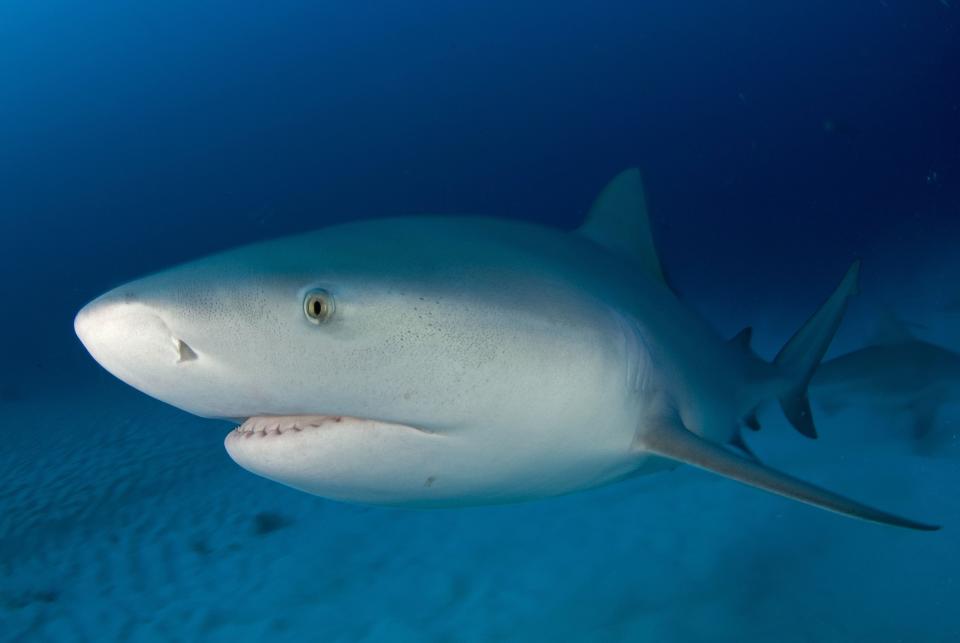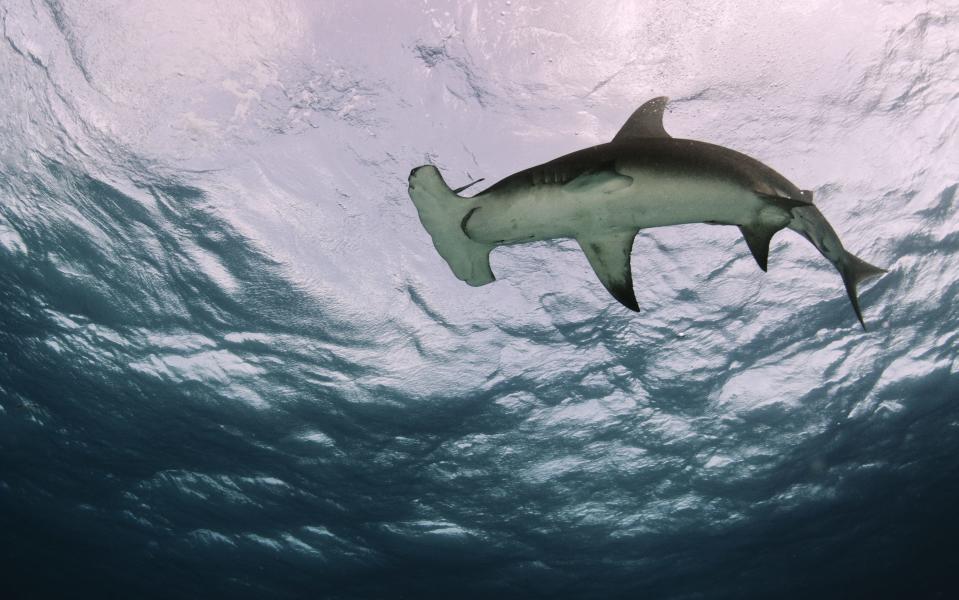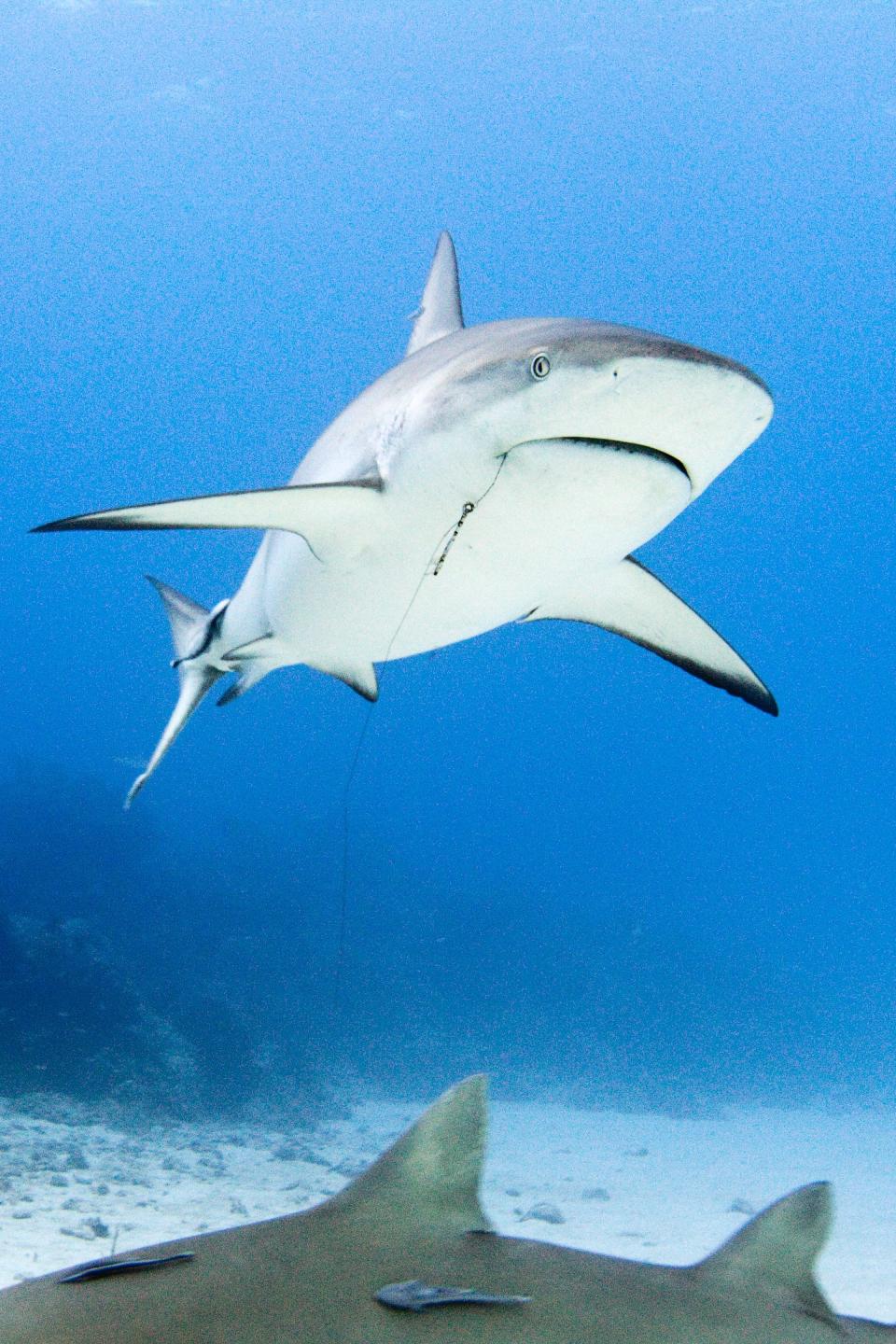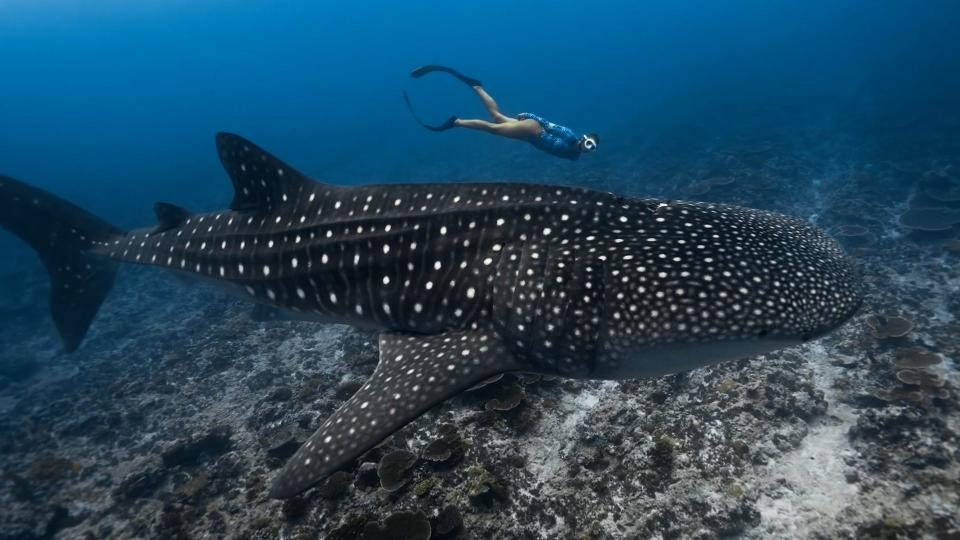Did you know? These are the 5 most common sharks found off the SW Florida coast
They ply open oceans, beaches, back bays and the dark recesses of our minds.
Sharks are among the most amazing creatures on Earth, and humans have long been captivated by their aquatic abilities, their size and what seems to be a voracious appetite for prey.
Some cultures across the planet have worshipped them as deities. Others have hunted them down for food.
Possibly the most feared predators in the world, sharks mastered the oceans millions of years ago, and they've changed very little since then.
Some are small and can be found feeding in tiny creeks and bay passes. Others are submarine-shaped gargantuans of the sea, measuring 20 feet or more.
They can be found in all four oceans and various seas, and some can even tolerate freshwater.
In celebration of these magnificent fish and the world they rule, here's a look at five sharks that can be found in Southwest Florida waters.
Bull shark

One of the most common sharks in Southwest Florida is the bull (Carcharhinus leucas). These beefy sharks are notorious eaters, and they grow to 13 feet in length and 700 pounds.
Huge fish, bull sharks aren't the largest shark in the ocean, but they may be the most aggressive, or at least the most common dangerous shark that occurs in waters where humans tend to swim and recreate.
"Studies in the 1970s suggest that the bull shark is an aggressive species and may be responsible for a lot of attacks," a University of Florida shark blog reads. "Particularly in the estuaries and upper estuaries. Bull sharks are what we call euryhaline ― they have tolerance for a wide range of salinities. This shark has been reported in low salinities of the upper estuaries and even into freshwater rivers. One report had them over 100 miles from the coast ― they are certainly where the people are."
DID YOU KNOW: Bull sharks have even been recorded breeding in freshwater systems, which means they can be found in virtually every river and coastal creek in Florida.
Great hammerhead shark

These are among the larger sharks on the planet, growing to 20 feet in length, and they're common here.
Giant hammerheads (Sphyrna mokarran) can be found in local passes and along the coast and are sometimes caught by shore-based anglers.
"Their heads are aerofoil shaped and there are several possible explanations for this," the UF blog reads. "It is more aerodynamic, making it easier for this ram-jetter to swim, using less energy to do so. It is a battery of sensory cells. By swinging the head back and forth, as they do, it is an advanced radar searching for prey, possibly finding it before other sharks do. There are stories of hammerheads arriving first. It is also believed they use their electric sense to detect buried prey ― the shape making this easier to find and expose them. It could very well be that all of these could explain the shape."
DID YOU KNOW: Known mostly for their giant heads, these sharks are top-notch predators, and it seems their odd-shaped heads may be one reason for their predatory grace.
Spinner shark

The namesake behavior of the spinner shark (Carcharhinus brevipinna) is to breach the surface and spin in the air when it is hooked by an angler or long-line.
Although they leap from the water with aerial displays, spinner sharks aren't overly large or aggressive, and they're generally considered not to be a threat to humans.
"Although the spinner shark is not considered dangerous to humans, it may pose a threat if attracted to divers that are spearfishing," a Florida Museum of Natural History website says. "According to the International Shark Attack File, the spinner shark has been responsible for 16 unprovoked attacks on humans, none of which have been fatal. However, its small, narrow teeth are better suited to feeding on small fishes, not attacking large prey items such as marine mammals."
DID YOU KNOW: Spinner sharks are often caught during offshore fishing trips along coastal of areas like Fort Myers Beach.
White shark
Also known as great whites, white sharks (Carcharodon carcharias) are the largest of the predatory fish, and they're very capable predators.
Among the great hunters of the sea, white sharks can grow to more than 20 feet in length and weigh as much as a truck.
Not all that great: Science increasingly dropping the 'great' from white shark
"White sharks commonly patrol small coastal archipelagos inhabited by seals, sea lions and walruses, offshore reefs, banks and shoals and rocky headlands where deepwater dropoffs come close to the shoreline," a Florida Musem of Natural History website reads. "White sharks usually cruise in a purposeful manner, either just off the bottom or near the surface, but spend relatively little time at midwater depths."
DID YOU KNOW: White sharks have been blamed for more deadly attacks on humans than any other species.
Whale shark

True mammoths of the sea, whale sharks (Rhincodon typus) are the largest fish on the planet, and they have a remarkable coloration that resembles patterns found on spotted eagle rays.
"As the name suggests ― these are large sharks, with a mean length of 45 feet but some reporting in at 60 feet," the UF blog says. "They are easily recognized first by their size, but also their coloration. They are brownish color with beige or white spots in nice rows running across the dorsal side."
Whale sharks are typically found here well offshore, and divers coastal anglers are sometimes treated with the sight of these monstrosities.
DID YOU KNOW: Although they're huge fish, whale sharks are not considered to be dangerous to humans.
Connect with this reporter: Chad Gillis on Facebook.
This article originally appeared on Fort Myers News-Press: What sharks are found in water near Naples, Fort Myers, Sanibel?

